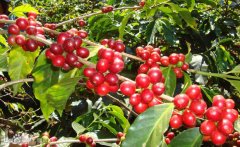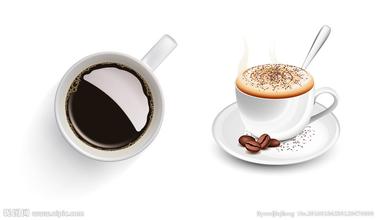Coffee Bean Flavor Robusta Method Presses Coffee Bean Size of Pot
Caramelization reaction
After drinking coffee, the dry coffee stains at the bottom of the cup were arranged into interesting patterns, and suddenly the sweet smell of caramel flashed for a moment, and then smell it carefully, the sweet smell of caramel came from the bottom of the cup, why is there the sweetness of caramel? Later, I found that the black coffee itself is really sweet, especially the sweetness of caramel! But the sweetness of each kind of coffee varies depending on the variety of beans and the way it is roasted.
The sugar in the coffee bean is caramelized at about 170-200 ℃, which is exactly the melting point of sucrose (185 ℃) and the temperature of the explosion stage when the coffee bean is roasted. The product of caramelization is divided into two parts:
The dehydration product of sugar is caramel or sauce.
The pyrolysis products are mainly volatile aldehydes and ketones.
Generally speaking, fire-roasted aroma, caramel and color are produced in the caramelization reaction, as well as other aromatic substances such as maltol, Cyclotene, furan and so on. These compounds can also be found in red wine, fruit juices, cream and other foods.
However, if caramel is too much in the baking process is not a good thing, but will cause carbonization, making the coffee dry and choking. If the caramel is not enough, it will make the aroma monotonous and lack of layers.
Mena reaction
Recently, more and more coffee shops set up a baking machine in front of the store to bake by themselves, so that they can not only save costs but also control their own quality. So walking on the street, you can often smell the unique aroma of roasted coffee beans, including the burning blue smoke smell of plant fibers, the sweet smell of cream, the brown smell of toast, and so on. Most of these rich flavors come from the Mena reaction during baking.
The Mena reaction can be divided into three stages.
Initial: carbonylamine condensation Amadori molecular rearrangement
Metaphase: fructosamine, a product of Amadori molecular rearrangement, is dehydrated to HMF.
The last stage: Aldol condensation, polymerization of melanin

Important Notice :
前街咖啡 FrontStreet Coffee has moved to new addredd:
FrontStreet Coffee Address: 315,Donghua East Road,GuangZhou
Tel:020 38364473
- Prev

Panamanian Emerald Manor Rose Summer Coffee beans
Panamanian Emerald Manor Rose Summer Coffee Bean Panama Geisha (Hacienda La Esmeralda) [Origin]: Panama [producing area]: located on the hillside of Mount Baru, the highest peak in western Panama [Manor]: Esmeralda (Emerald Manor) / Hacienda La Esmeralda [Grade]: SHB [growth altitude]: 1450m [treatment]: fine washing
- Next

What is the secret of coffee baking? what materials can be used as supercapacitors?
Secret 1: to achieve the highest caramelization-caramelization is an important factor affecting the flavor of coffee, as raw beans absorb a lot of heat when roasting, then there is the first 1st cracking, at this time, the sugar begins to be converted into carbon dioxide, water continues to evaporate, the aroma of coffee will gradually come out and form coffee oil. This pyrolysis reaction can last until the second explosion (2nd)
Related
- Does Rose Summer choose Blue, Green or Red? Detailed explanation of Rose Summer Coffee plots and Classification in Panamanian Jade Manor
- What is the difference between the origin, producing area, processing plant, cooperative and manor of coffee beans?
- How fine does the espresso powder fit? how to grind the espresso?
- Sca coffee roasting degree color card coffee roasting degree 8 roasting color values what do you mean?
- The practice of lattes: how to make lattes at home
- Introduction to Indonesian Fine Coffee beans-- Java Coffee producing area of Indonesian Arabica Coffee
- How much will the flavor of light and medium roasted rose summer be expressed? What baking level is rose summer suitable for?
- Introduction to the characteristics of washing, sun-drying or wet-planing coffee commonly used in Mantenin, Indonesia
- Price characteristics of Arabica Coffee Bean Starbucks introduction to Manning Coffee Bean Taste producing area Variety Manor
- What is the authentic Yega flavor? What are the flavor characteristics of the really excellent Yejasuffi coffee beans?

